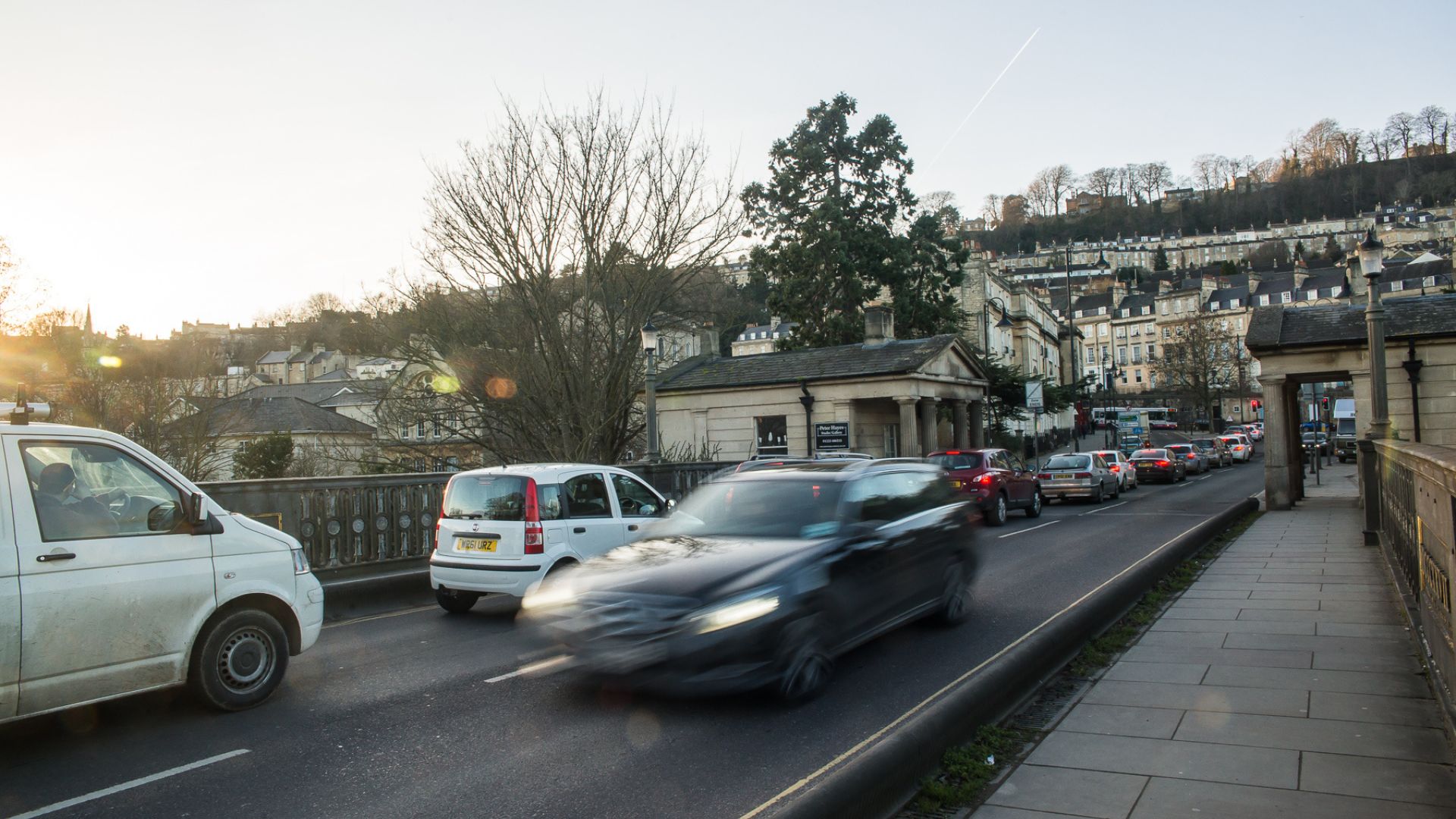Date published: 2025-10-30 | Category: Focusing on prevention, Roads, travel and transport

A temporary 18-tonne weight limit in place at Cleveland Bridge in Bath will be extended for another year as the council continues to monitor and collect data from the historic structure.
Approximately 16,000 vehicles a day cross Cleveland Bridge, which has been continuously monitored since reopening to assess the performance of its hanger bars and to detect any further deterioration. This is to provide ongoing confidence that the bridge remains safe, allowing the council to make informed decisions to secure the future of the bridge.
The 18-tonne weight limit has been in place on the Grade II listed bridge since 2022 following a recommendation for a staged approach to reopening. This follows surveys identifying that structural components of the bridge needed to be maintained, repaired or replaced for it to continue to function safely.
The temporary weight limit, which expires on 15 November, is being extended for up to 12 months through a Temporary Traffic Regulation Order (TTRO) so monitoring can continue. The council will also extend the temporary 7.5 tonne HGV restriction across a number of roads in the city centre to prevent HGVs diverted from the bridge from cutting through the city centre, however access is still permitted for loading.
Councillor Lucy Hodge, Cabinet Member for Sustainable Transport Delivery, said: “To ensure the ongoing safety of the public we are again extending the weight restriction in place on Cleveland Bridge as we continue to monitor and collect data that will help us decide next steps. We want to remind everyone that the restriction applies to all vehicles, including coaches, and that there is an ANPR camera on the bridge identifying any vehicles that breach the limit.”
The number of vehicles breaching the weight limit on Cleaveland Bridge is reducing year-on-year, with only 0.06% of passing vehicles breaching the limit this year. Numerous advance warning signs regarding the restriction are in place on all the major arterial roads leading into Bath and on the roads leading to the bridge.
On 22 October a driver was convicted and ordered to pay fines totalling £680 after pleading guilty to breaching the weight limit. Several drivers were convicted earlier this year.
Bath & North East Somerset Council has expressed its full support for the findings of National Highways' M4 to Dorset Coast Strategic Connectivity Study, which recommended traffic including HGVs travelling between the M4 and south coast should be routed through Wiltshire instead of Bath via the A350.
This change to the primary strategic route would mean significant long-term improvements to traffic flows in the city and improvements in air quality.
ENDS
